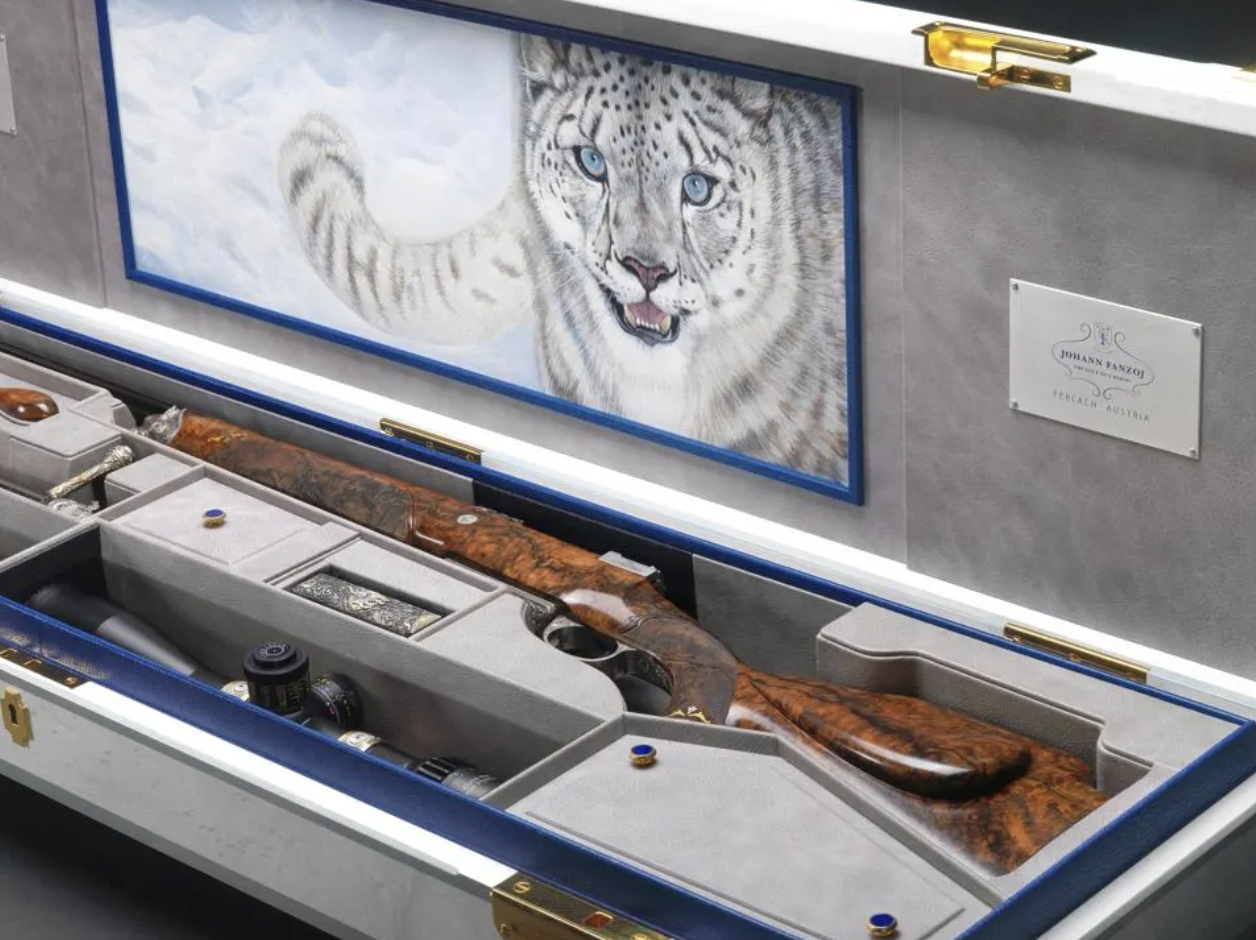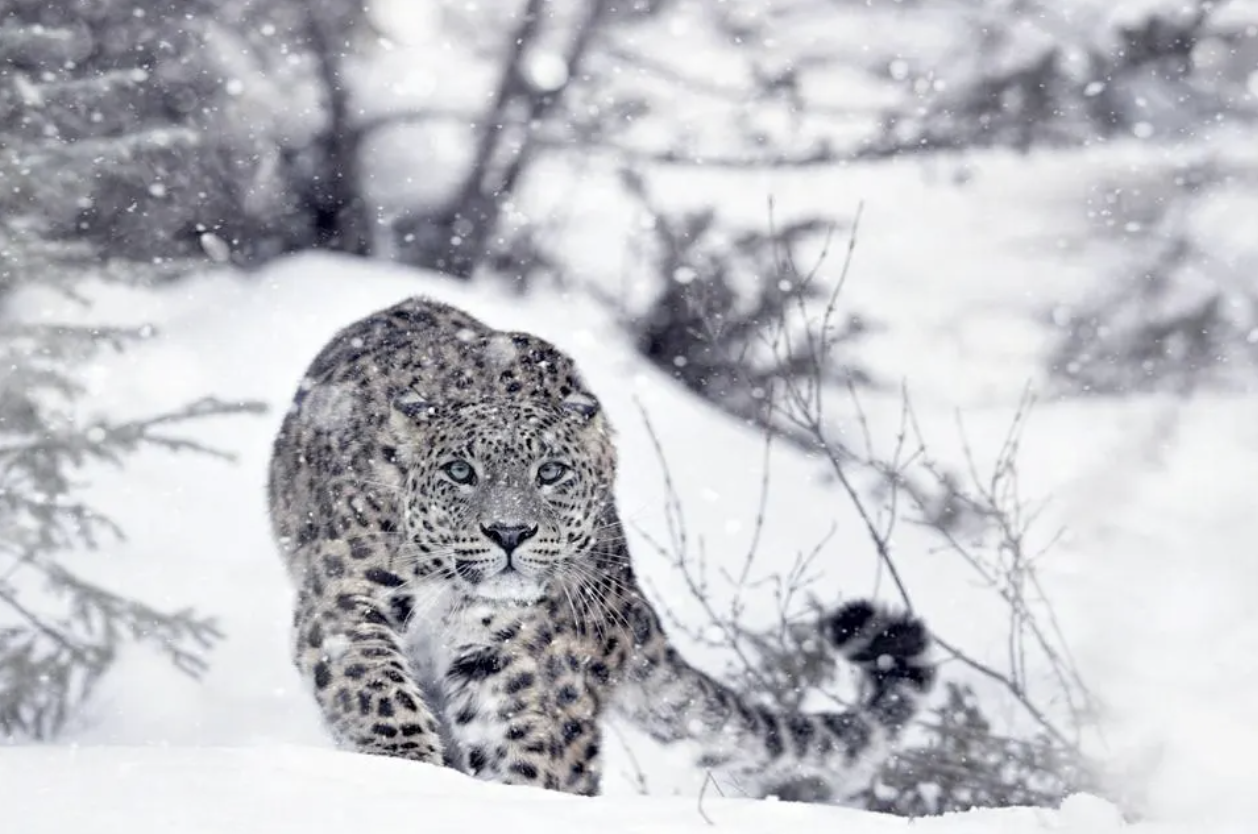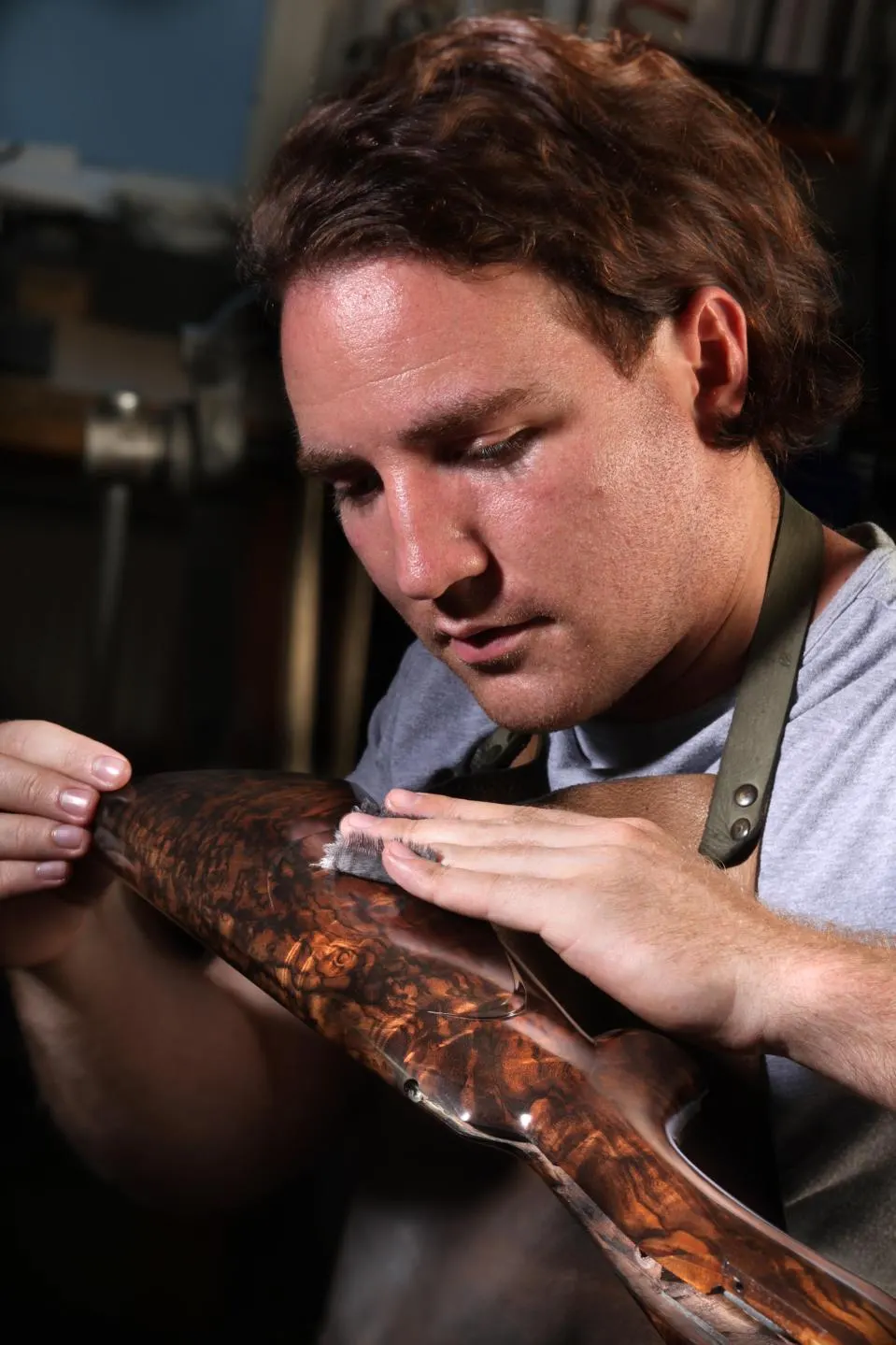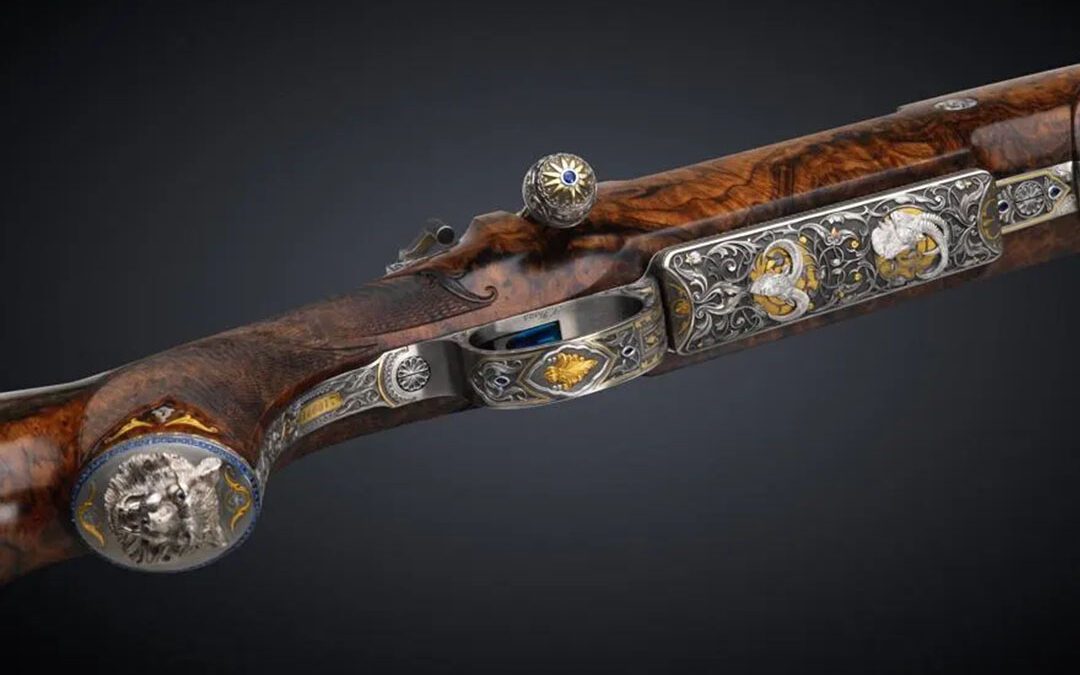At its peak, some 300 gunmakers were employed here. After the Napoleonic Wars of the 19th Century, however, production fell significantly as it had moved to larger cities like Vienna and Steyr. To save the town’s historic business and differentiate their productions from those of competitors, gunmakers in Ferlach shifted their focus to producing high-quality premium firearms rather than more utilitarian military weapons.

Johann Fanzoj prides itself on producing the finest individual pieces for the most discerning of hunters.
Starting in 1790, eight generations of the Fanzoj family have been key architects of Ferlach’s premium gun emergence. Since then, the family has been making some of the world’s most coveted and beautifully crafted rifles and shotguns that are as much works of art as they are precision firearms. While the canvas may be wood and steel, the soul of an artisan lives in each of the Fanzoj productions, and that has been the hallmark of their firearms since Johann Fanzoj’s vision set the company’s path more than two centuries ago.
Today, Fanzoj produces some 25 guns annually, each an heirloom masterpiece that will be used and appreciated for generations. Along the way, the company has helped preserve the gun-making craft by supporting a gun-smithing school that is training the next generation of craftsmen.

There are an estimated 4,000-6,000 wild snow leopards remaining in the mountains of central Asia.
Bringing a modern vision to an ancient craft is the mission of Daniela and Patrick Fanzoj who, like their father Johann ‘Hans’ Fanzoj, have pioneered new markets for their bespoke firearms. They see yet another mission, however, in the company’s future. It is to blend the story of craftsmanship and artistry at the center of their productions with the role that hunters have played in conservation across the globe. The seed of the idea has grown organically from well-traveled clients who want their firearms to share personal stories of the hunt and the creatures—many of them non-game animals—that are emblematic of the places and the experiences they’ve accumulated over a lifetime of hunting.
While the world’s hunters may know that sportsmen and women have funded the lion’s share of global conservation efforts, Daniela is determined that mainstream audiences should come to understand the vital role they have played in saving scores of species and the habitats that the wildlife depends upon. She’s concerned that few people comprehend that all wildlife benefits from hunter-funded habitat work—including hundreds of non-game species.

Daniela Fanzoj has brought the vision of themed projects which explore symbolism through artistry.
“Few outside of the hunting community know how important hunter’s dollars and the policy leadership they have provided has been,” says Daniela. “It’s not a stretch to say they have been the backbone of conservation efforts for many decades. I want our work to embody the highest level of craftsmanship and creativity, but also to serve as a catalyst for telling a meaningful conservation story.”
Thus, the idea of creating exquisite pieces (some selling for more than $500,000) that can be used to showcase the role of hunters in conservation through stunning, deep-relief engraving while raising funds for conservation was born. In the process, Daniela sees such a mission as having the added benefit of helping preserve the gun-making tradition itself. She is a woman on a mission to see her transcendent idea come to life, a signature legacy in the long line of significant Fanzoj contributions to the world of bespoke gun-making.

Patrick Fanzoj puts the final touches on yet another custom rifle. Some of these heirloom rifles are the result of more than a thousand hours of work.
A stunning example of the company’s craftsmanship to conservation vision is a masterpiece rifle that features the beauty and extraordinary wildlife of Tajikistan —home to some of the world’s most coveted mountain game species as well as the endangered snow leopard, known as the ghost of the mountains, owing to its elusive nature.

The company blends classic values and high aesthetics with unprecedented technical sophistication.
The exquisite ensemble was commissioned by a client who wanted the gun to tell a story of nature’s fragile balance and hunters’ dedication to sustainably manage these remarkable species that inhabit the glacial-covered mountains of Central Asia. If not for the money brought here by hunters—as is the case in Africa and other parts of the world—there would be little reason to tolerate the livestock-killing cats. As experts will tell you, wildlife that pays, stays. That is, survival of species often has as much to do with economy as it does biology.
Currently, Daniela is working with both private clients and conservation groups to use some of their most lavish Fanzoj firearms as both catalysts for telling the sustainable wildlife management story as well as to raise sorely needed funds for landscape habitat projects. “Hunters have been such key players in so many conservation success stories,” says Daniela, “that others should know of their significant contributions.”
And if Daniela has her way, that truth will take shape when wood and metal meet in the family’s historic workshop—one more legacy crafted in a little-known mountain village in Austria where hunting and conservation are celebrated as one and the same.
Editor’s Note: This article originally appeared in Forbes.

